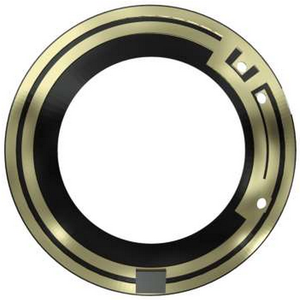College Dropout Challenges Google in Smart Contact Lens Innovation
June 15, 2015
The Mountain View, CA-based search engine giant could face increasing competition over the release of the world's first smart contact lens.
Kristopher Sturgis
 Last summer when Google and Novartis announced they were teaming up to develop a smart contact lens that could monitor glucose levels in patients with diabetes, there was little doubt that anyone could possibly do it better. But Harry Gandhi, a 22-year-old college dropout from Canada, decided to take them on. And his startup has just received a $100,000 grant to polish off their version of the world's first smart contact lens.
Last summer when Google and Novartis announced they were teaming up to develop a smart contact lens that could monitor glucose levels in patients with diabetes, there was little doubt that anyone could possibly do it better. But Harry Gandhi, a 22-year-old college dropout from Canada, decided to take them on. And his startup has just received a $100,000 grant to polish off their version of the world's first smart contact lens.
Gandhi recently accepted the grant from the Thiel Foundation, a philanthropic outfit that promotes young entrepreneurs to start a business rather than attend college. Gandhi's medtech startup, known as Medella, now has seven full time employees, all with an aim to build a contact lens that can measure glucose levels in tears, in an effort to help patients with diabetes better manage the disease, according to a news release from MIT.
Medella's device isn't too different from what Google has been working on. It starts with a tiny biosensor built into the contact lens that will measure the glucose concentration in the moisture surrounding the eye. The data will then be transmitted via an antenna to a small external device that can be attached to a patient's shirt, or possibly their glasses or jewelry. That device then works in tandem with a smartphone app to store and analyze the data for the patient.
While the specs aren't inherently different from Google's smart contact lens, Gandhi believes his design will differentiate itself by offering a sensor that requires less calibration, and a longer lifespan. The company is building its own app to correspond with the technology, and are even working on time-stamped glucose level readings to help patients better understand how different day-to-day activities affect their blood-sugar levels.
While glucose monitoring could significantly change the way diabetics manage their disease, many believe that untapped potential in the realm of smart lens technology remains. Tears also contain a chemical called lacryglobin, which serves as a biomarker for breast, colon, lung, prostate, and various ovarian cancers. Monitoring lacryglobin levels could be useful for patients in remission of any of the aforementioned cancers, serving as a means to detect cancer, and possibly serve as a drug delivery system.
|
Harry Gandhi won a $100,000 grant to pursue his vision of a smart contact lens. |
Researchers at the University of Michigan are even working with graphene to create infrared-sensitive contact lenses, with the endgame being that these could provide a form of night vision without the need for cumbersome goggles.
While the sky appears to be the limit when it comes to introducing new features to a smart contact lens, many challenges remain, including creating a lens that is thin and comfortable, and finding new ways to efficiently amplify and power the sensors within the lens. While the jury is still out on whether these issues can realistically be addressed, one can only hope that entrepreneurs like Harry Gandhi will certainly push the envelope in an effort to drive innovation. As we all know, competition breeds success.
Refresh your medical device industry knowledge at MEDevice San Diego, September 1-2, 2015. |
Like what you're reading? Subscribe to our daily e-newsletter.
About the Author(s)
You May Also Like



